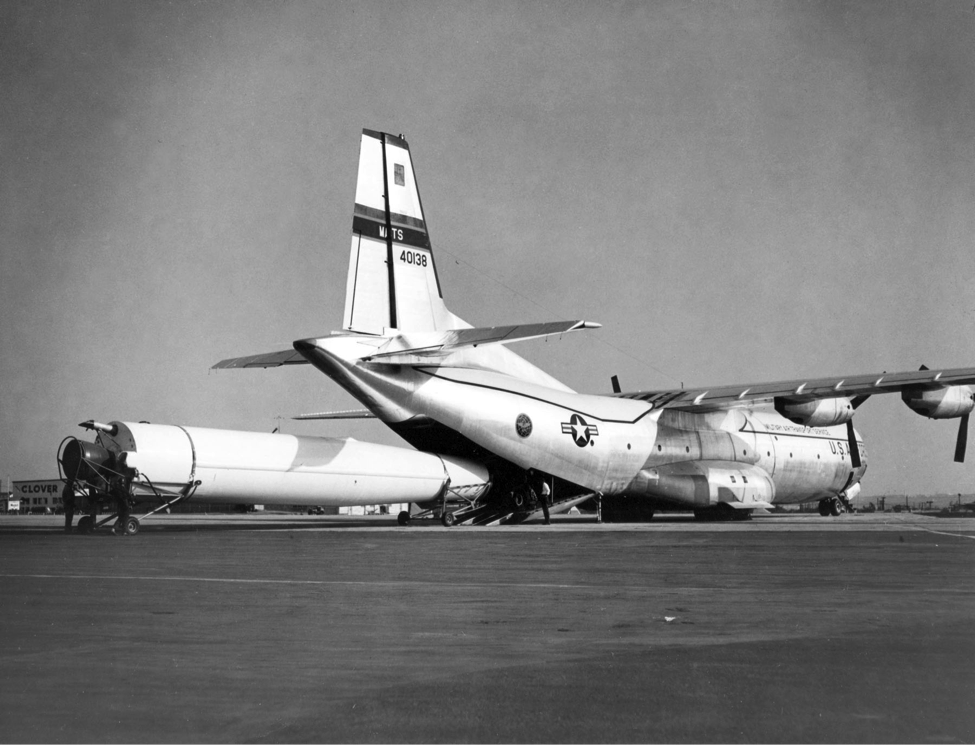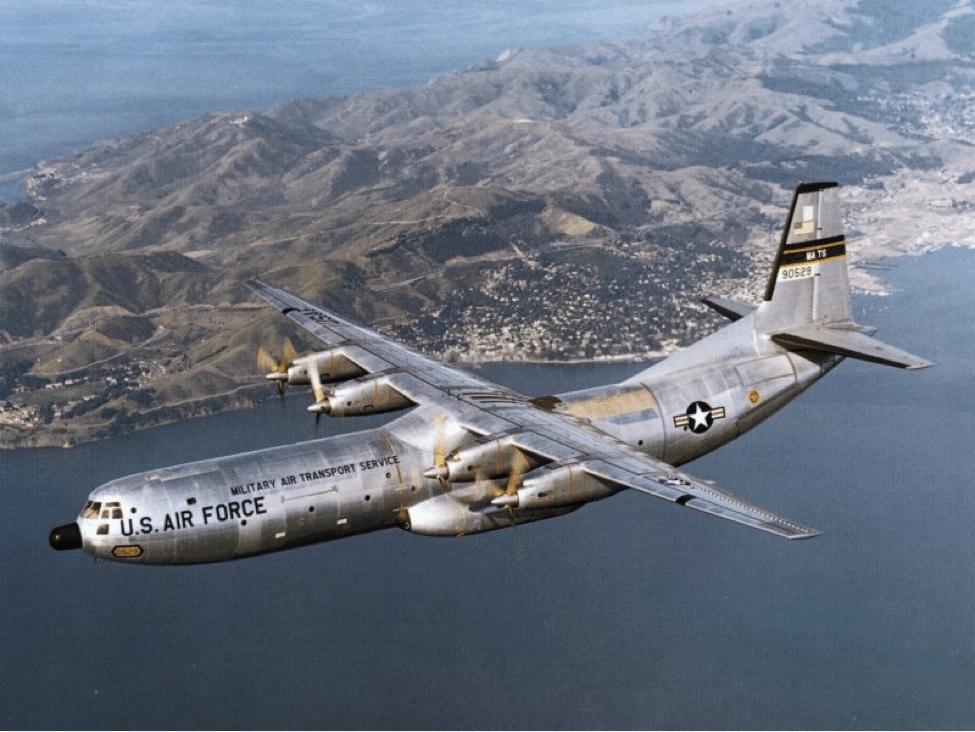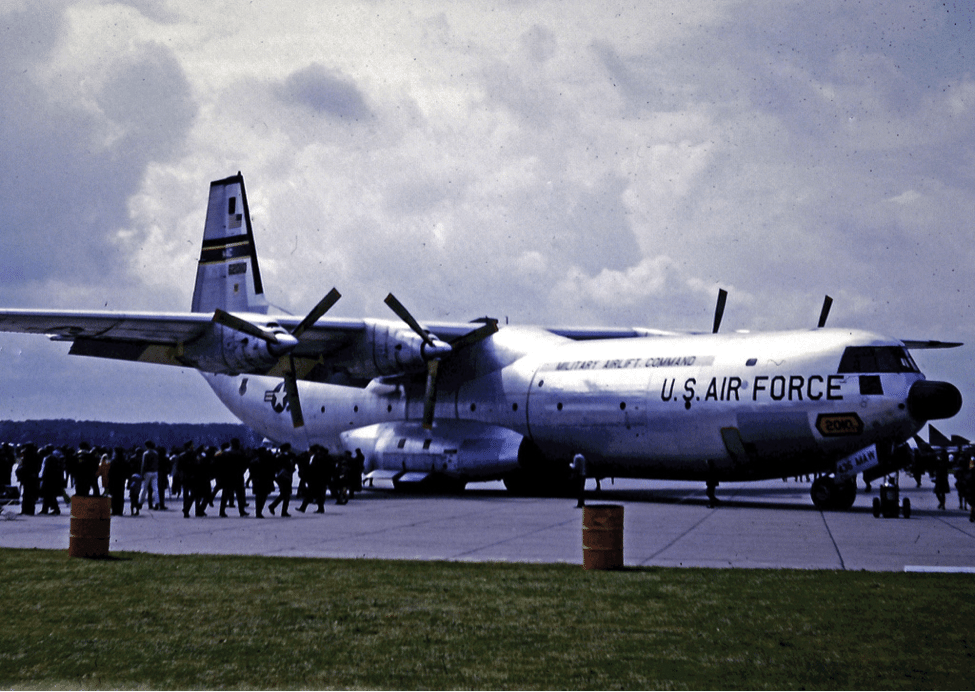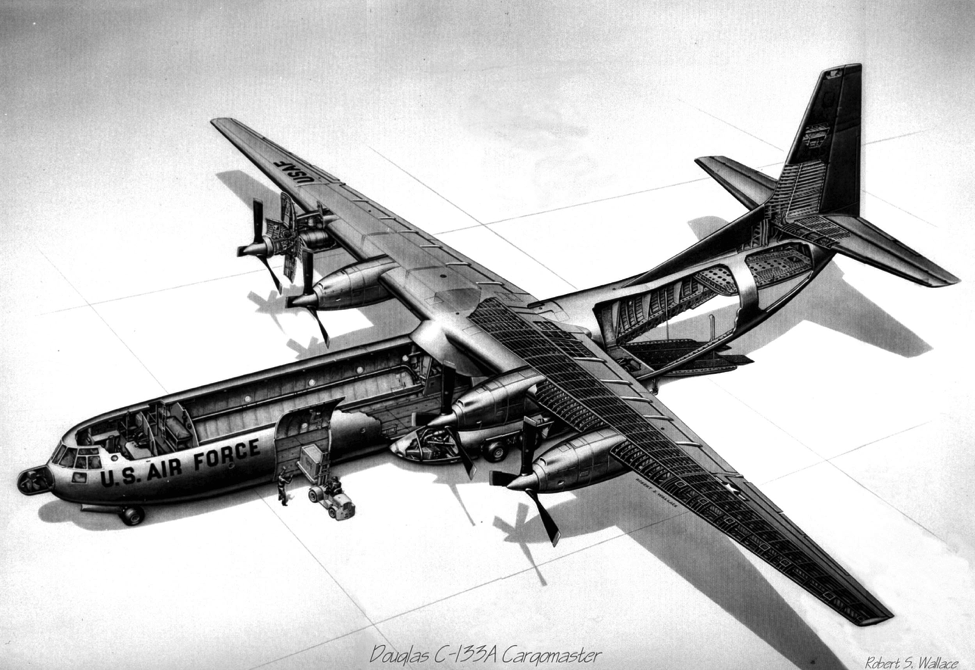The Cargomaster Proved to Be the Magic Ticket for Airlifter Design the World Over
On 23 April 1956, the Douglas C-133 Cargomaster flew for the first time. The forgotten link between the war-built and designed transports and the airlifters that replaced it, the Cargomaster was the first American strategic transport designed for direct loading from ground level and the first and largest powered by turboshaft engines.
Also unique in that it combined a high-mounted wing with faired fuselage-mounted retractable landing gear, the C-133 was the template followed by the vast majority of the airlifters designed and built after it, not just in the United States, but around the world. And it sounded really awesome – more like a B-36 Peacemaker than anything else before or since. If you have ever heard one in flight, you know.

Strategic From the Start
Designed to be a strategic airlifter as opposed to a tactical airlifter such as the Lockheed C-130 Hercules, the Cargomaster had a 97-foot-long cargo compartment that was more than 13 feet high, pressurized, heated, and ventilated.
The C-133A and C-133B differed primarily in the configuration of the rear cargo doors. The B model Cargomaster had rear cargo doors that opened to the side, allowing it to carry outsize cargo like the SM-65 Atlas, LGM-25 Titan, and LGM-30 Minuteman series of ballistic missiles.
C-133s delivered these missiles by the hundreds to their bases. They also delivered them to Cape Canaveral for use as spacecraft boosters. Eventually, all Cargomasters were reworked to make them capable of carrying these strategic loads.

From Drawing Board Straight to Production
Douglas never did build a prototype Cargomaster. The airlifter went straight into production off the drawing board. The first to be built were 35 C-133As, which were delivered to the United States Air Force (USAF) Military Air Transport Service (MATS) beginning in August 1957. These 25 C-133As were followed by 15 C-133Bs.
Soon, Cargomasters were flying MATS cargo flights all over the world. On their inaugural flights from the United States to European bases, two C-133As established transatlantic speed records for transport aircraft. When MATS became Military Airlift Command (MAC) in 1966, the Cargomasters just kept on doing what they did best.

If It Didn’t Fit It Didn’t Fly
The Cargomasters proved exceptionally versatile and valuable during the Vietnam War, when they were responsible for carrying the largest airliftable components and vehicles back and forth between Southeast Asia and America.
In simplest terms, if it wouldn’t fit in a Lockheed C-141 Starlifter, it would probably fit into a Cargomaster.
The C-133’s cargo area was 27 feet longer, four feet higher, and nearly two feet wider than that of the C-141. If it was too big (or too heavy) for the Cargomaster, then it was shipped in pieces or went to the war zone on a boat instead.

The Sound of Shaft Horsepower
Powered by four Pratt & Whitney T-34 turboshaft engines turning 18-foot three-bladed propellers, a distinctive feature of the C-133A was the sound it made in flight. The thrust of the engines was controlled by propeller blade pitch alone – the engines were constant-speed.
This arrangement was every bit as complicated as it sounds, and malfunctions caused several operational losses. The C-133B had uprated T-34s that produced a combined 4,000 more shaft horsepower but sounded and operated the same.
The airlifter cruised at a shade more than 320 miles per hour and could lift 55 tons of cargo. The cargo hold load height was the same, five feet off the ground, as the airlifters that eventually replaced it.

That Cargo Cavern
And into that cargo hold went the darnedest things.
For instance, the C-133 could carry one Boeing Vertol CH-47 Chinook helicopter, one Sikorsky CH-54 Skycrane helicopter, two Sikorsky HH-3 Jolly Green Giant helicopters, five UH-1 Iroquois (Huey) helicopters, four Cessna O-1 Bird Dog aircraft, or one McDonnell Douglas F-4 Phantom II.
The aforementioned ballistic missiles could all be carried along with PGM-17 Thor, SM-62 Snark, or AGM-28 Hound Dog tactical missiles. C-133s could also carry 11 standard pallets of general cargo.


excellent article, I just recently saw a C-133 at the Pima air museum in Tuscon, and it was great to read it about it. It also compares very well to the Antonov An-22 Antei. By the way, there is a typo in the nickname of Antonov 225 — it’s ‘Mriya’ (‘Dream’ in Ukrainian), not Mirya.
I was a mechanic at Dover Air Force Base for 3 1/2 years working periodic maintenance on the C-133. This video brought back a lot of memories of the C-133A. My specialty was landing gear and air make-up area in the gear pods. I transferred for a 6 month TDY to the C124 on flight line maintenance. There are one each of the C-133 and C-124 at the Air Force Museum at Dayton, Ohio. I worked on both of these actual airplanes.
When were you at Dover AFB? My father was a flight engineer on C-133’s 1958-1963. His name was MSGT Duane Hartenhoff.
You forgot to mention the loss ratio and the fact that when a crew left home station with it no other crew took it when the crew had to lay-over for crew rest. A C-141 could land with a crew out of time and an hour later a different crew left with it and the load was delivered in a timely manner.